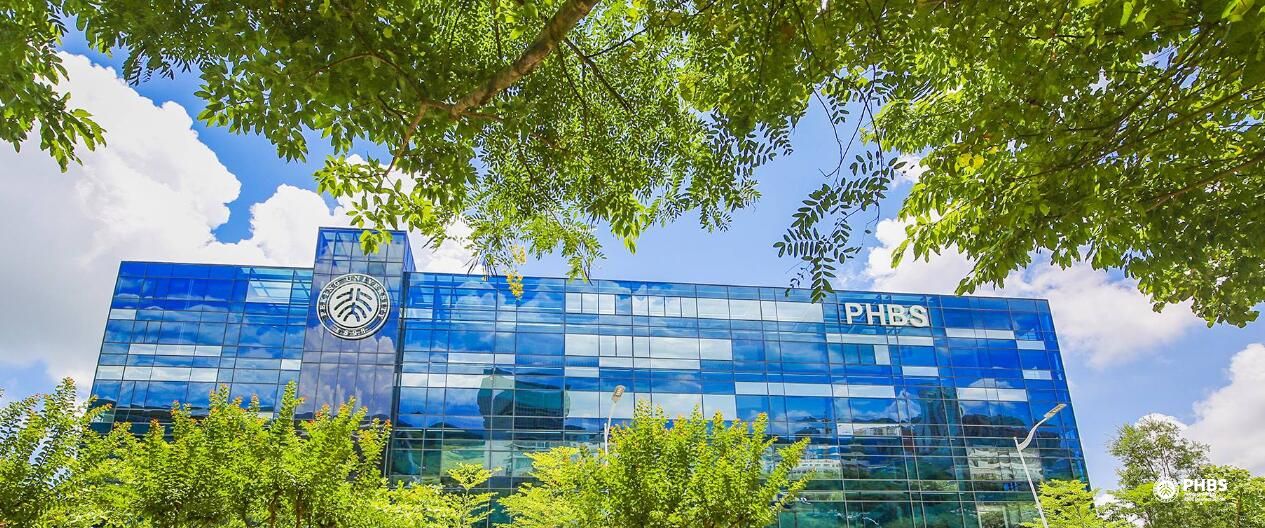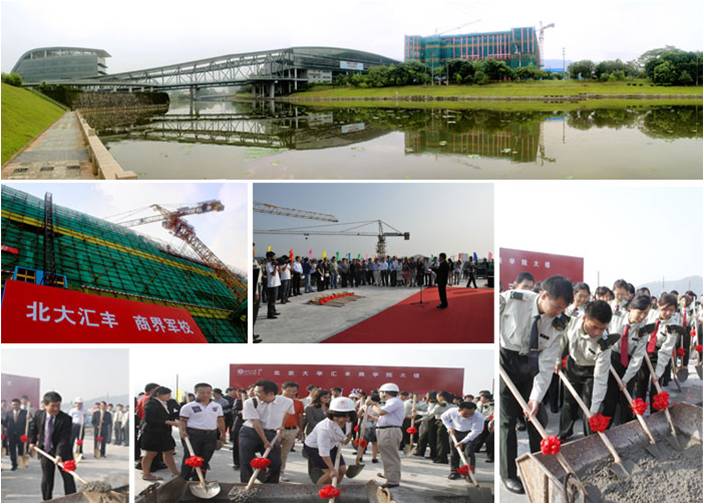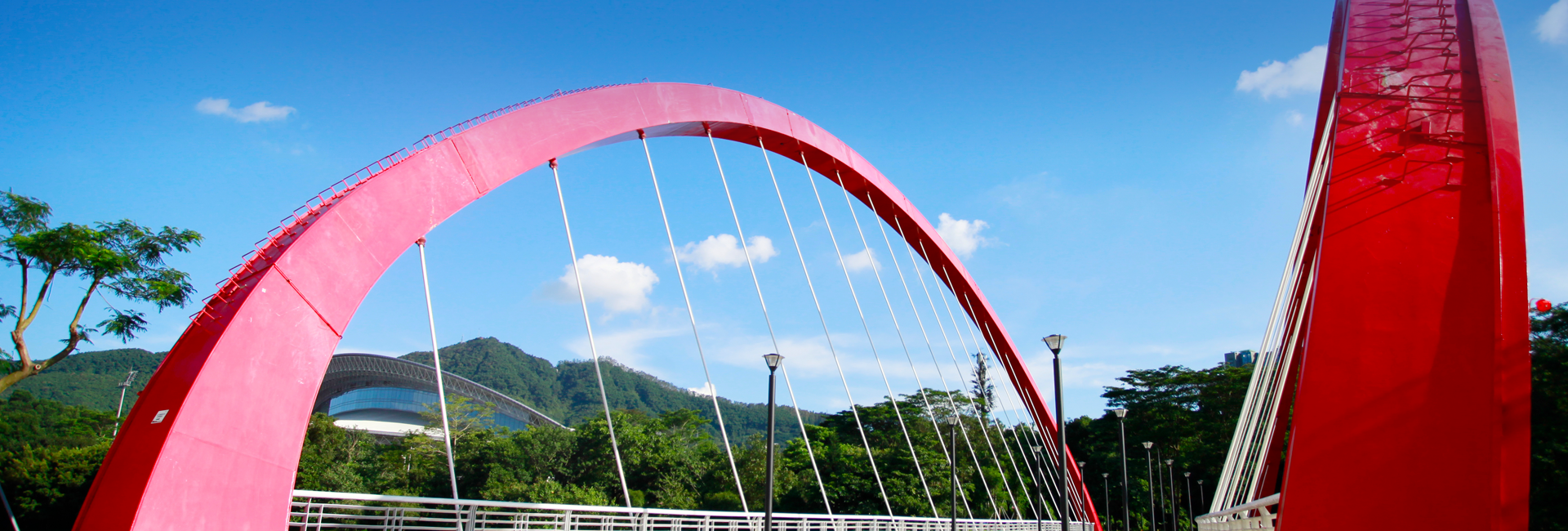
HSBC Business School's New Building
In November 2013, HSBC Business School relocated to its new building next to the University Town library. The building is the largest Business School building in the world. The building features innovative teaching and research space, built-in teaching resources, and a number of seminar and lecture rooms. The building was funded through the generous support of HSBC.
Design Features
In order to meet the demands of a growing student body and the diversification of our graduate programs, Peking University HSBC Business School funded the construction of the new academic building. The building sits on a plot of land equaling 10,392 square meters and offers more than 60,000 square meters of classroom and office space (40,000 square meters above ground and 20,000 square meters underground). The building is located in the center of University Town in Nanshan District of Shenzhen, China.
The building includes 12 classrooms for the dual-master program, 4 classrooms for the MBA program, 3 classrooms for the EMBA program, 8 classrooms for the EDP program, 2 small meeting rooms, 8 conference rooms, and 10 seminar rooms.
In addition to traditional classrooms, the new building will also houses study centers, archives, an exhibition room, a staff center, alumni groups, a café, a relaxation center,Starbucks, and other facilities for the PHBS community. The building also includes a lecture hall which can host events with up to 1000 participants, and has underground parking space for 200 vehicles.
The HSBC Business School was built with the intent of providing a simple and elegant space for education. The new building differs from the rest of the PKU Shenzhen campus in its modern design, demonstrating the school’s intent on maintaining an edge in the educational tools and technological resources it provides to its students.
Building Layout
Totaling more than 60,000 square meters, the PHBS building is the largest single business school building in the world. The building’s open atrium is a visual demonstration of the school’s welcoming of the free exchange of ideas and the expectation that students think critically and independently. The classrooms are structured to support every means of dialogue, ranging in size from large lecture halls to one-on-one meeting rooms. The new building also includes a variety of informal meeting spaces, such as a coffee shop and an art gallery, in which PHBS community members can continue discussions beyond the classroom. By providing the resources for these different levels of dialogue, HSBC Business School hopes its students and faculty members can share ideas to a greater degree than ever before.
The PKU HSBC Business School building does not sacrifice practicality for the sake of aesthetics. The building’s design takes into consideration staff and student needs on each floor. The size and location of each classroom is also intended to suit the needs of the school’s different degree programs. While some lecture halls and seminar rooms are organized for the dual-degree program, others were designed with the EDP, MBA and EMBA program in mind. From the size of the restrooms to the number of fire safety resources, every area of the new building takes into account the needs of the school’s faculty, staff, and students.
The PKU HSBC Business School building was also designed to be an environmentally-sustainable addition to University Town. The external face of the building was constructed using XR2 energy-efficient glass, and the building’s stone paneling helps insulate the building for further energy efficiency. In addition, the building relies on a roof siphoning drainage system in order to reduce the number of pipelines used, and the building grounds rely on a rainwater recovery system to keep the surrounding vegetation green.
The building’s facilities also aim at energy sufficiency. The building includes an Intelligent Elevator Control System, designed to minimize energy consumption while maximizing safety. A high-efficiency air conditioning system distributes cool air between floors based on the differing temperature needs of each floor. Not only do these environmentally-friendly measures decrease the carbon footprint of PKU HSBC Business School, but they also decrease the operational costs of the school over time.
Laying the Foundation
On January 6
th, 2010, Peking University HSBC Business School hosted the Groundbreaking Ceremony at the future site of the new HSBC Business School. Chen Zhang Liang, the former Vice President of Peking University and current Vice Chairman of the Guangxi Zhuang Autonomous Region, Xu Qin, the Mayor of Shenzhen, and Hai Wen, the current Vice President of Peking University, were all in attendance. A host of HSBC Bank representatives and HSBC Business School students were also at the event to show their support for the school’s growth.

Academic Development
At PHBS the most significant resource is the school’s human capital. The faculty, staff, and student body are composed of individuals with extraordinarily diverse life experiences and a wealth of experience in different academic fields. This diversity is what makes PHBS unique in mainland China, and what drives the school forward in making curriculum decisions. Above all, PHBS administrators keep in mind how coursework will prepare students for internationally-oriented careers and how course materials will inform students’ understanding of transnational business.










